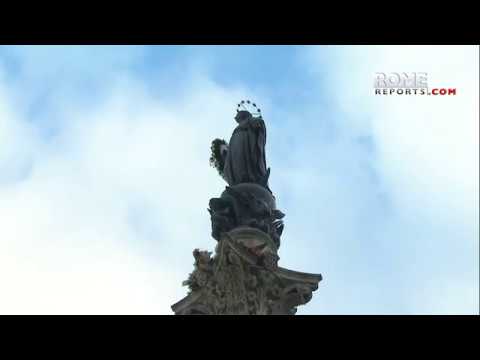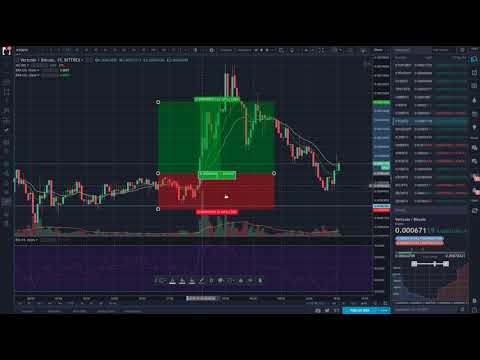

Although the approach to tracking all components of the budget is basic, cash budgets in large organizations often rely on information from different departments to put together the master document. For example, sales managers may be responsible for tracking sales income and expenditures, while advertising agents may have to document the cost of promoting the business. These workers then have to provide the accounting department with their data, and the accountants ultimately have to compile the information to make it meaningful as a “big picture.” This will depend on the time frame for which the budget is being prepared.
Factory overhead may be applied based on labor, but it is ultimately driven by overall production. The accompanying graphic is a simplified illustration of these budget building blocks. For a personal budget, income includes take-home pay as well as any additional income from freelancing, alimony, and outside projects. For a business, management will look at sales and other assets. A cash budget is an estimation of cash inflows and outflows over a specific period of time.
Preparing a monthly budget vs. actual report will give small business owners the information they need to make important decisions about the cash position of their company. Watch Out For…The creation of a cash budget requires you to make estimates about many different aspects of your company and the environment in which it operates. Future sales will be contingent on many things, not the least of which is competition, the local economic climate and your own internal operations and capacity. In addition, after sales are estimated, potential costs must also be derived. The important thing to keep in mind while arriving at these figures is that past experience is important, but so is intuition. The estimates you will need to develop must be based in reality and yet contain a dose of creativity and, if warranted, optimism.

Academic SolutionsIntegrate HBS Online courses into your curriculum to support programs and create unique educational opportunities. Corporate LearningHelp your employees master essential business concepts, improve effectiveness, and expand leadership capabilities. Thanks you for the level of understanding on this topic but I need new materials as technology advance. OpenStax is part of Rice University, which is a 501 nonprofit. Budgeting is vital to have a better relationship with your money.
Budgeted Balance Sheet
Assuming an average-cost method, ending finished goods inventory can be valued as shown on the Finished Goods spreadsheet. Table 7.1 shows a list of the most common changes to the balance sheet and where the information is derived. In order to create your goals from your budget, you will want to regularly evaluate that budget and consider new financial goals.
A simple method for monitoring the cash budget is to prepare a budget-versus-actual report of actual and budgeted expenses every month. The first column shows the budgeted amounts, the second column shows actual company performance, and the third column shows the difference in terms of a percent. After a base level of accounts receivable is established , it must be adjusted to reflect the amount that will actually be paid during the time period. Of course, past experience will be the most reliable indicator for making these adjustments.

Recurring expenditure may be in the form of salaries, interest on loans, electricity bills, other administrative expenditures, etc. An example of a non-recurring expenditure can be the repair or replacement of major machinery or its part, purchase of durables for business, etc. In other words, as the name suggests, it is a budget incorporating all the financial aspects of the business. While we appreciate suggestions from our readers, we just wanted to let you know there’s more coming up on budgeting. However, besides this article, there’s another one on – How to create a business budget for your small business.
Let us understand the cash budget system better with the help of a couple of examples. It is also prepared to check if the excess cash is available, then they must be invested in a productive way to maximize the business returns. Cash FlowsCash Flow is the amount of cash or cash equivalent generated & consumed by a Company over a given period.
A cash budget allows you to estimate and track all of the money that comes into your business and leaves it. Every cash budget, whether used by a corporation or an individual, contains the same basic components. Cash management is the process of managing cash inflows and outflows. Cash monitoring is needed by both individuals and businesses for financial stability. The average collection period is the amount of time it takes for a business to receive payments owed by its clients in terms of accounts receivable. Fifty per cent of the total sales are collected in the second month of the sale.
Trade Credit
Secondly, changes in prices and rates affect them no less than fixed and variable expenses. Among overhead expenses, some expenses like property taxes, property insurance, some of the executives’ salaries and certain kinds of maintenance charges are fixed in character. These fixed expenses are expected to hold up a specific level regardless of variations in volume of business. But fixity in an expense does not mean what is primary component of cash budget that it will not change from this year to next year. The underlying limitation of this approach is that it overlooks general economic and business conditions that definitely influence the volume of business activity of a firm. Out of the three methods discussed above, the first method is usually found suitable for short-term forecasting of cash while the other two methods are used for long-term forecasting of cash.
- The example shows that an inordinately large dividend payment in the second week of the cash budget, coupled with a large asset purchase in the following week, places the company in a negative cash position.
- If there are any unusually large cash balances indicated in the cash budget, these balances are dealt with in the financing budget, where suitable investments are indicated for them.
- The company then subtracts the cash needed to pay for production and other expenses.
- If you are new to HBS Online, you will be required to set up an account before starting an application for the program of your choice.
- In addition, professional standards dictate the reporting that must accompany such reports if they are to be released for external use.
It can result in missing out on handsome profits for the company. Also, the management may plan to repay part of its debt and reduce its interest burden during periods with a cash surplus. If it is a deficit, work to identify ways to reduce expenses or increase cash receipts.
Provides the necessary framework to plan cash payments for materials. The lower portion of the spreadsheet shows that the raw material is slated to cost $1.40 per square foot. Shehadeh pays for 80% of each quarter’s purchases in the quarter of purchase. The base or foundation for the master budget is an assessment of anticipated sales volume via the sales budget. The expected sales level drives both the production plans and the selling, general, and administrative budget.
Provides the framework for planning staffing needs and costs. Each of Shehadeh’s screens requires three direct labor hours to produce. As revealed by the Labor sheet, the scheduled production is multiplied by the number of hours necessary to produce each unit. The resulting total direct labor hours are multiplied by the expected hourly cost of labor. Shehadeh assumes that the cost of direct labor will be funded in the quarter incurred.
How to Prepare a Cash Budget: Procedure, Methods and Steps
Therefore, the accuracy of cash budget depends on accuracy of sales forecast. The management, on the basis of past experience, may forecast the amount of sales for cash and for credit. Timing of cash inflow from credit sales depends on terms of sale and customer’s past behaviour in paying their debts. Although the timing of cash inflow from customers cannot be predicted very accurately, the management can make a fair estimate of cash inflow by studying the debt paying habits of its customers.
Income is based on projections and estimates for the periods they cover, as are expenses. For this reason, organizations often create both short- and long-term budgets, where the short-term budget is regularly adjusted to ensure the long-term budget stays on track. For example, in quarter 1 of year 2, 65% of the quarter 1 sales will be collected in cash, as well as 30% of the sales from quarter 4 of the prior year. There were no sales in quarter 4 of the prior year so 30% of zero sales shows the collections are $0.
If, however, firm is interested to increase its market share, increase in spending becomes inevitable. Fixed expense, therefore, means that if a change takes place the new level will prevail regardless of the scale of operation next year. One must, therefore, be careful in estimating fixed overhead expenses. It would be more useful to collect such information from various sales districts or for different classes of customers. This will include your utilities, telephone, copying and day-to-day office expenses.
Direct Material Purchases Budget
In the same vein, cash projections can be used to identify periods of time where excess cash balances are generated, thereby allowing financial planners to make effective use of the capital. Accountants frequently refer to the cash budget statement to find the financial health of the organization. It shows a clear picture of the cash flow of the organization and how much funds are readily available to use without affecting the regular happenings of the business. A positive cash budget indicates surplus cash and a negative statement indicates otherwise. To make your company a success, you must understand your revenue and expenses.
Using information from Big Bad Bikes sales budget, the cash collections from the sales are shown in Figure 7.17. A budget is a spending plan you create based on income and expenses. It estimates how much money you will make over a certain timeframe and how you will spend it. Though it may seem like some kind of punishment, it’s actually a plan that will be helpful in the long run. It will know in advance the possible cash surplus or deficit scenario in near future.
Next step in construction of the cash budget is to predict cash disbursements in different months of the budget period. Generally, a firm makes payments for purchase of raw materials, direct labour, out of pocket expenses, capital additions, retirement of indebtedness and corporate disbursement such as dividends. Budgets for these items certainly provide the basis for estimating the cash requirements.
This compensation may impact how and where products appear on this site . These offers do not represent all offers that may be available to you. When creating a budget, you have to take an in-depth, honest look at your expenses and make decisions on how to use your money. So, let’s look at what a budget is composed of, how you create one of your own, and the ways in which a budget can help you reach your financial goals. In practice, firms prepare these budgets to match the need for cash and capital budgeting. The study thoroughly compares the actual results with the budgeted results.
Since it is difficult to predict these expenses, there is no certain way to estimate for them. But it’s wise to set aside some cash for this category to stay prepared. These are one-off, unexpected costs that your business might incur in any given year. Some examples of these costs include replacing broken furniture or purchasing a laptop.
Phone, data, and software subscriptions can also fall into this category, along with debt payments. Is the estimated assets, liabilities, and equities that the company would have at the end of the year if their performance were to meet its expectations. Creating a budgeted balance sheet is a more advanced skill not covered in this text. The first quarter of the year plans cash payments from the prior quarter as well as the current quarter.

